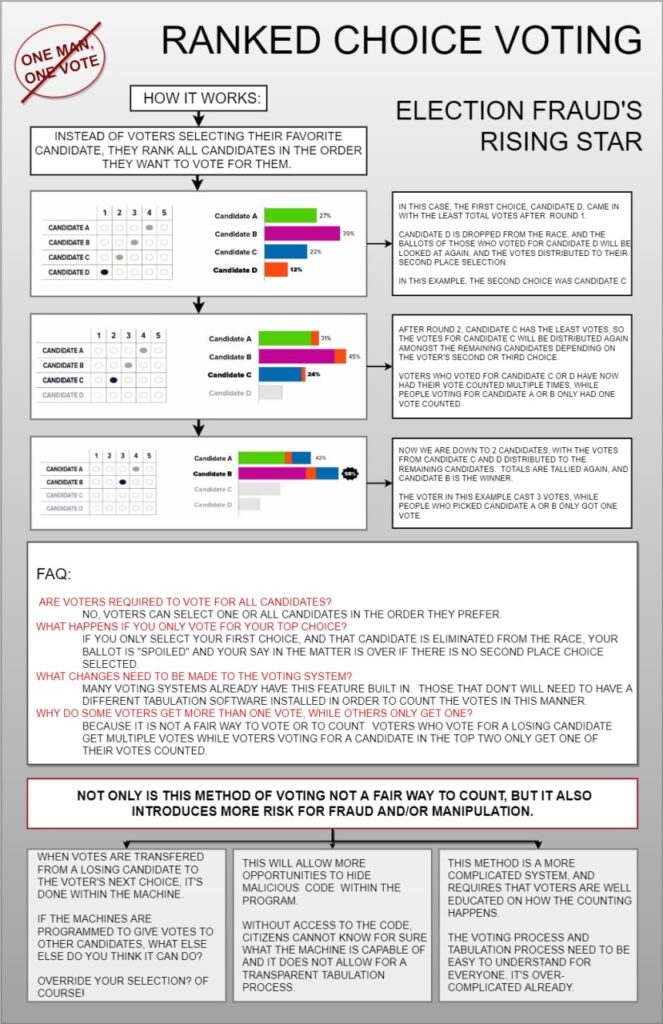You might be hearing the term “ranked choice voting” (RCV) or “preferred voting” tossed around, or you might already know that Sarah Palin lost her race in Alaska last year despite mass support, immediately after RCV was installed.
But what you might not know is that this has been the plan all along.
Electronic voting machines are all already equipped with the RCV functionality, it’s just a matter of “turning that feature on,” according to election vendors. That in and of itself is a bit unsettling, isn’t it? How do we know for sure that it hasn’t already been “turned on” in your county?
But what is RCV and why all the hubbub?
Ranked Choice Voting, or RCV, (or it’s euphemism, “preferred choice voting”) is a type of voting that allows citizens to vote for more than one candidate in a race where there will be only 1 candidate chosen. RCV then “weights” the voter’s choices according to how they rank them.
For example, if we had RCV in federal elections (we don’t… yet), then in November of 2024 Democrats could (for example) put Robert F. Kennedy as their first choice for president, and Joe Biden as their second choice, and say, the Progressive Party candidate as their third choice. In which case, Kennedy might get, say, the equivalent of 1.5 votes, Biden would get 1.0 votes, and the 3rd choice Progressive candidate 0.5 votes.
What could go wrong?
For starters, RCV will make audits utterly impossible. Hand counting will also be deemed impossible (did you know many counties across the U.S. are making headway on moving back to hand counting of paper ballots?). And the results will include fractional numbers, further obfuscating election results and reporting to the American public.
But RCV and its lookalikes are being sold under the guise of “innovation” and “improving our elections.” Phrases like “this is just like in a school board race where you vote for more than one candidate.” But I don’t rank those candidates, so how can it be just like that?
It smacks of the cellular companies telling us 5G towers must be safe (even though there is virtually ZERO medical studies on their safety… like really, only 7 out of 35,000 EMF studies are medical, and those 7 are either inconclusive or not good). The other day a pitch man for 5G towers literally said to me, “this is the same technology used in household items such as baby monitors.” Even if that’s true, a baby monitor is the size of my fist and it’s only used for a few hours a day… is a 100 foot tall structure that runs 24/7 really comparable??
But apparently conservatives aren’t the only ones who don’t want RCV. Check out this recent article by The Federalist. Click here to read. According to the article, the Washington D.C. Democratic Party leaders felt that implementing RCV “would kneecap voters’ ability to choose their preferred nominee in any given election and result in potential voter disenfranchisement.”
Who could have guessed Republicans and Democrats would finally find common ground… over election integrity, of all things!
Need the details broken down a bit more? Want some talking points before you meet with your elected officials or party leadership? Or maybe you just want a cool graphic to share out on social media. Whatever your motive, check out this awesome RCV visual from Erica in Washington State.:


